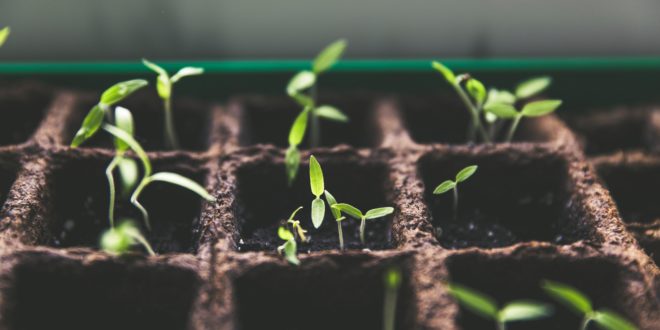If you’re a gardener, you may not have heard of chitting, but you’ve almost certainly carried out the practice. Put simply, it’s the art ‘sprouting before you sow’. The reason you’ve very likely done it, is because gardeners routinely set out their potato seed in boxes, placed in the light, so the tubers develop strong growing shoots. However, a less commonly practised form of chitting is the sprouting of seeds before they’re sown, and the reasons it’s done may surprise you.
Chit to save time
How many packets of opened seed do you currently have in your seed tin? We’re guessing quite a few! And although the seed inside them could well still be viable, even 2 or 3 years after the packet has been opened, you’re probably reluctant to sow them – and for good reason. We’re in mid-spring already and if you sow those seed, wait for them to push through the soil, and then find they’re not going to make an appearance, it puts you a long way behind in your gardening schedule. But chitting those same seeds can help. Sprinkle a few of them on a damp paper towel placed on a saucer. Cover in another layer of wet towel, and leave the saucer in a warm place, keeping the paper damp at all times. If the seed is going to germinate, it will do so in a much shorter time than if it was in the garden, and not only that – you can observe the sprout the moment it appears. If the signs are good – sow the seed in the garden straight away, confident it’s viable. If the signs are poor, head to the garden centre pronto for a fresh packet.

Chit to save money
Once a seed packet has been opened, and seed has been exposed to the air, its viability begins to be compromised. Yet this doesn’t mean the entire packet is wasted. It simply signals that the germination rate will be less than if the seed was fresh. If 90% of seed generated from a freshly opened packet, 60% may germinate the following season from a previously opened packet. Chit a pinch of seed to help you decide what its germination rate is likely to be, and sow accordingly. If the chitted specimens show that only 50% of seed is germinating, sow the rest of the seed in the packet but sow it twice as thickly!
Chit to beat the beasties
Garden soil teems with microscopic (and larger) beasties. Many are beneficial to garden health, some less – and even the goodies can sometimes get out of balance and damage your young seedlings and germinating seed. If you’re experiencing problems getting seed ‘through the ground’, it may be that the entire seed (or even just its sprout) is being chomped before it reaches the light of day. By chitting seed before it hits the garden soil, you’re giving it a head start. It doesn’t have to sit in the soil waiting to absorb moisture. It ‘hits the ground running’ and escapes many of the pests and perils that plague non-germinated seed. Larger seed (such as that of pea and bean) is easiest to handle once chitted but don’t be put off chitting smaller seed either. Beetroot, silverbeet and spinach seeds are all able to be picked up (gently) once germinated, and sown into rows in the garden. Don’t be afraid to chit even fine seed such as that of parsnip, carrot and tiny celery seed. Once the seed has germinated, simply handle it gently with a pair of bathroom tweezers as you lower it into the soil.
Chit to beat the cold
Many kinds of seedlings will happily grow (albeit slowly) in temperatures that are cooler than desirable, yet they will fail to germinate in soil that isn’t bang-on the right temperature. Get around the problem by chitting the seed first, in the warmth of a sunny kitchen window ledge or on a horticultural heat-pad. The sprouted seed can be kept indoors for several days before being sown in the garden, provided it remains damp (but not water-logged). When you consider the advantages of chitting, why wouldn’t you!










Join the Discussion
Type out your comment here:
You must be logged in to post a comment.